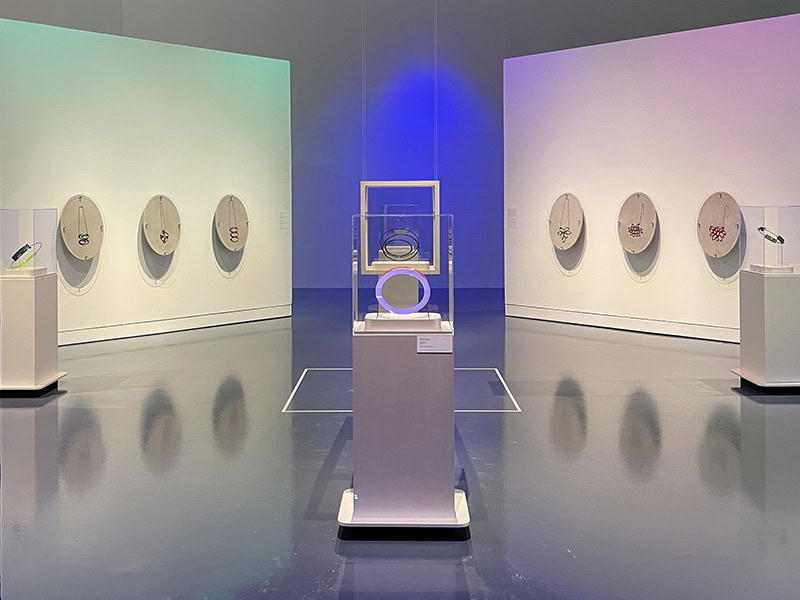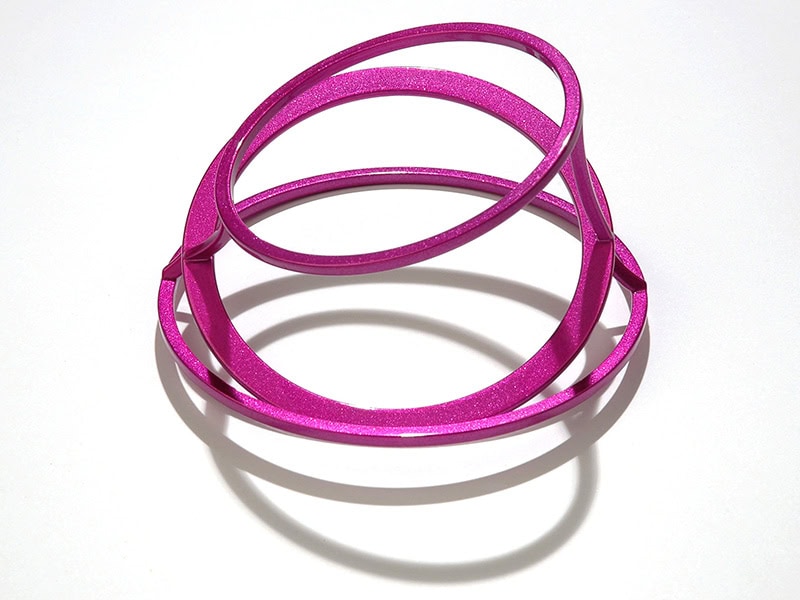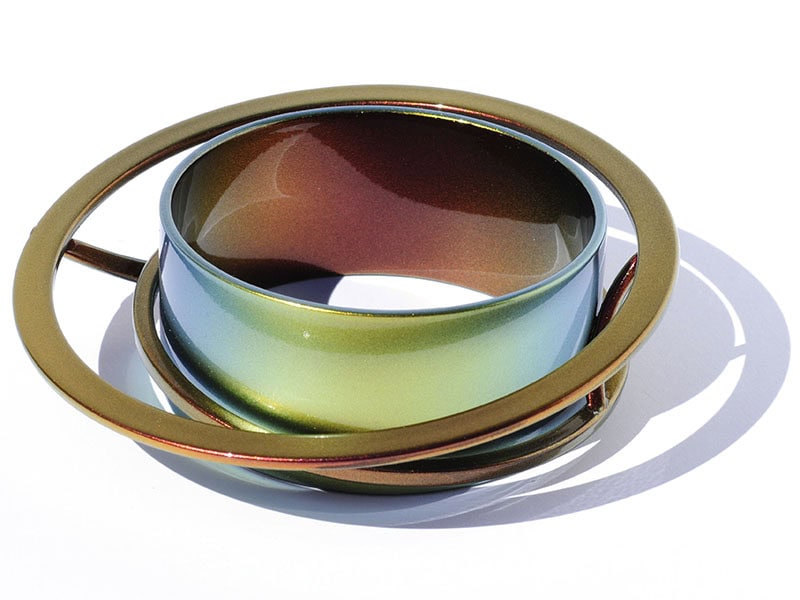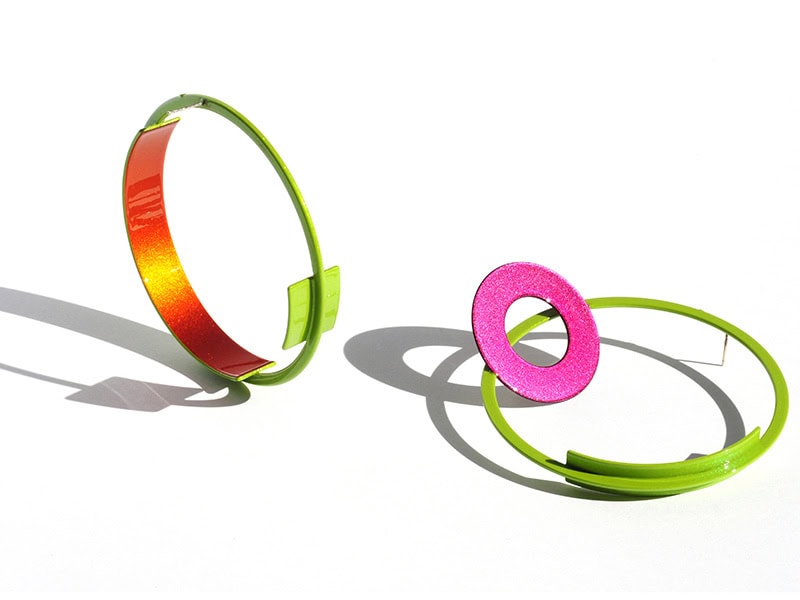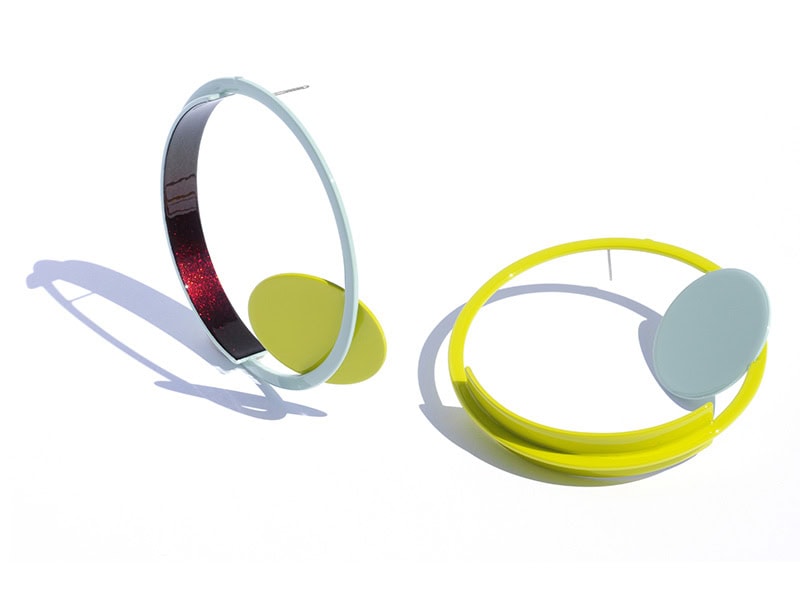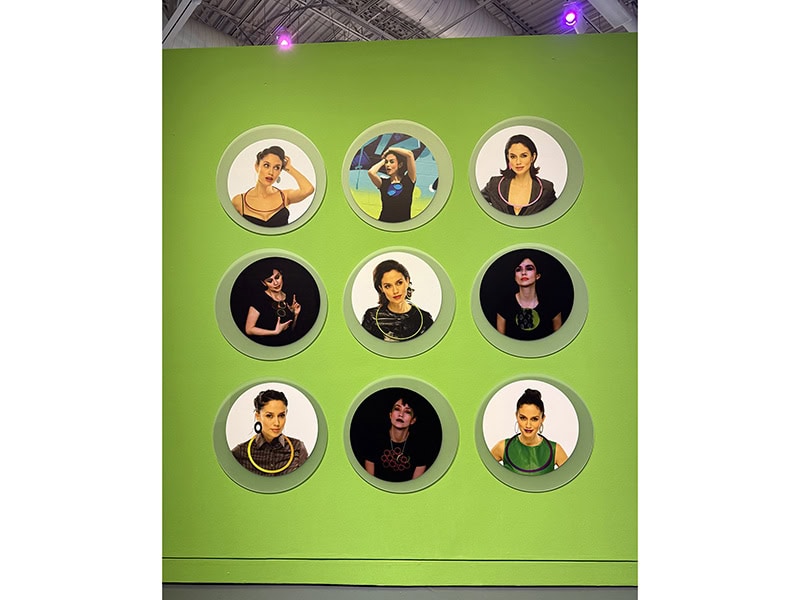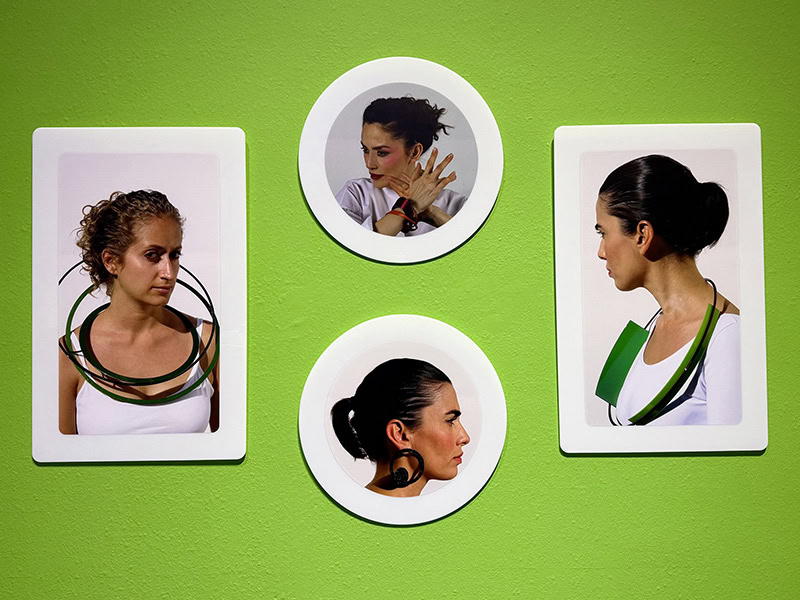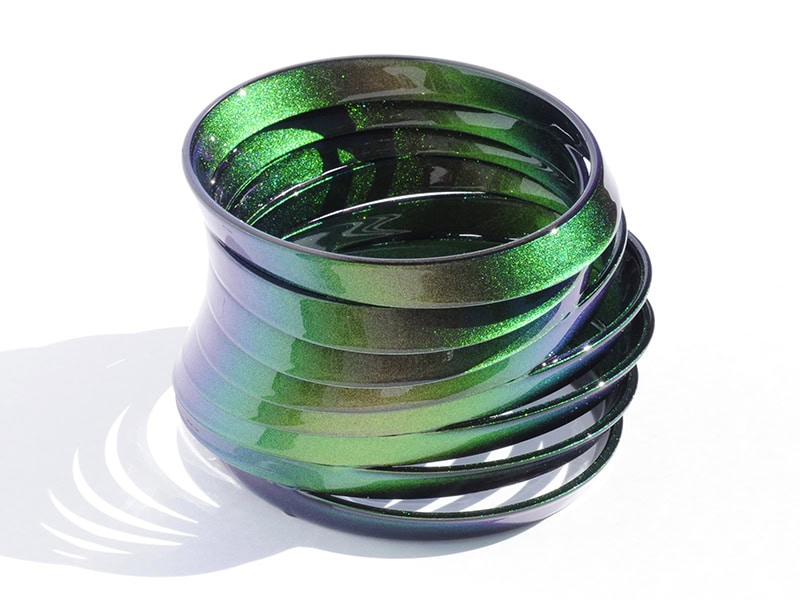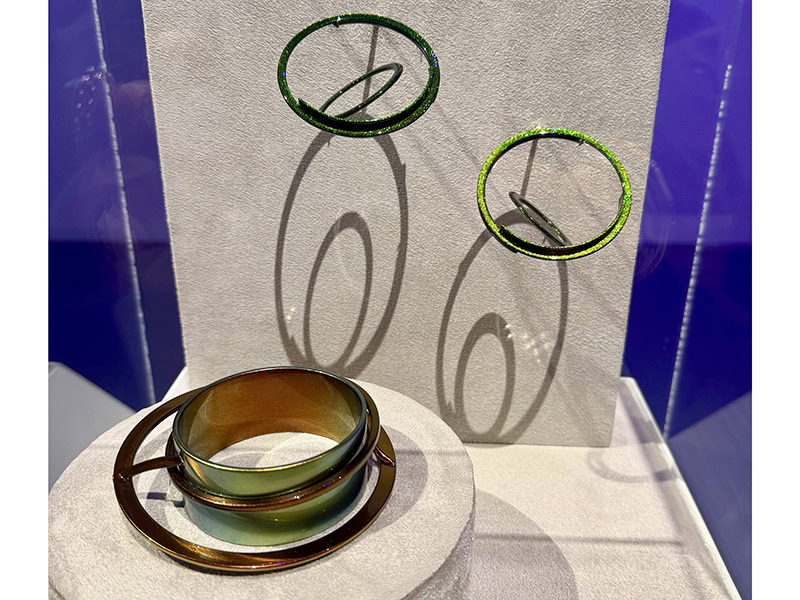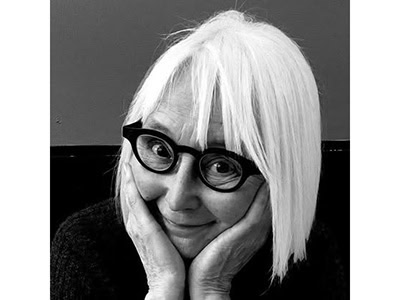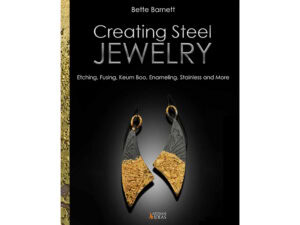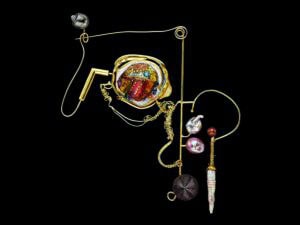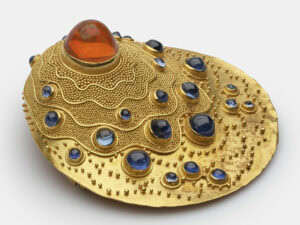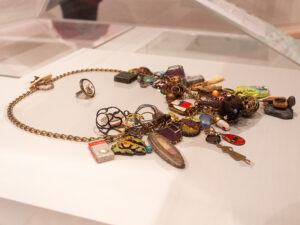Paint: Rachelle Thiewes
El Paso Museum of Art, El Paso, TX, US
May 30–September 21, 2025
Rachelle Thiewes’s new show, Paint, is something of a blockbuster. Thiewes has established a distinguished career over many years. Her several bodies of work surely merit a retrospective. This show, however, is comprised entirely of recent work. A whole lot of it, rigorously conceived and flawlessly crafted.
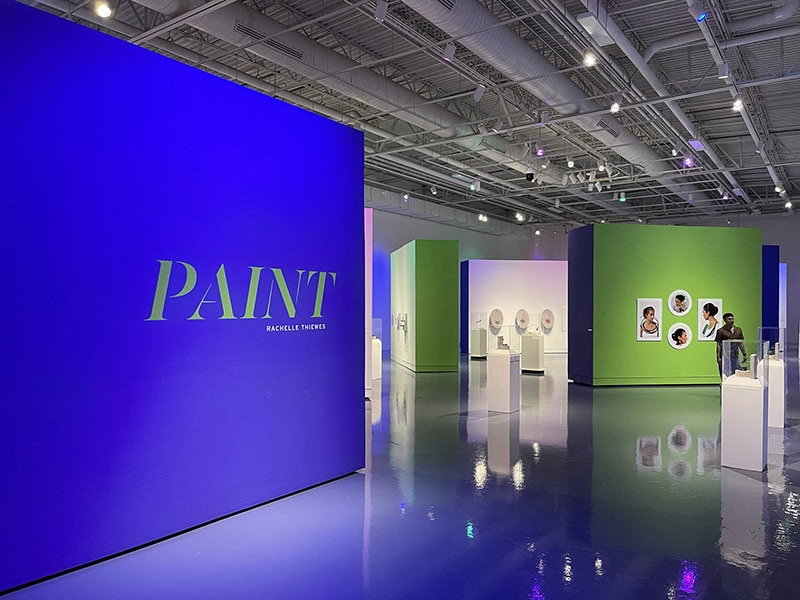
The installation occupies a central gallery of the El Paso Museum of Art. A supersaturated, ultramarine title wall announces PAINT: Rachelle Thiewes. The title is big and its color lush. It hints at some unexpected content and intentions for a jewelry exhibition. Behind the wall, the gallery expands, to space and air and light flickering from the vividly colored surfaces of jewelry spotlighted throughout.
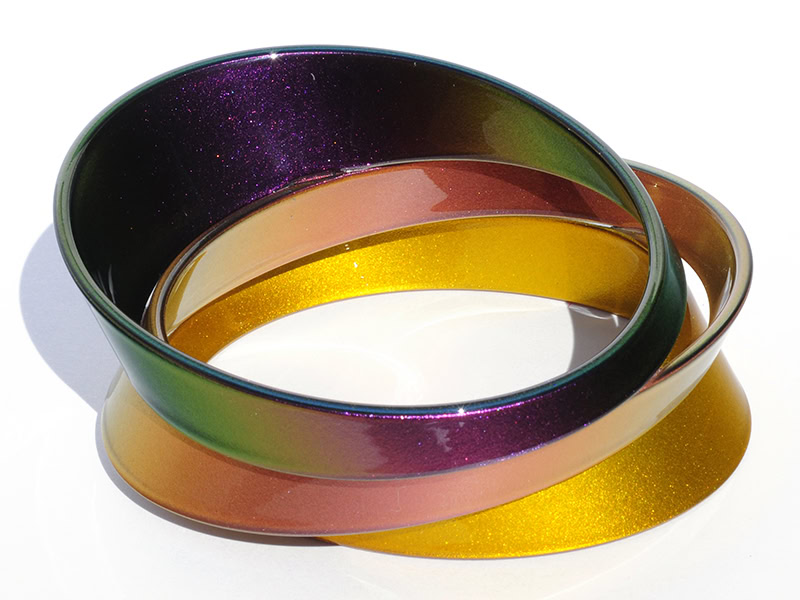
All aspects of the work and installation result from lengthy conversations between Thiewes and the museum. The layout, casework, and lighting were built and positioned with great deliberation. The vibrant objects and lush display materials hold a kind of glamour. But those qualities are offset by the museum’s respect for Thiewes’s sensitivity to the beauty and tension of restraint. There’s no excess flourish here. The work and its presentation are consistently confined to the opportunities inherent in structure, materials, and light. The astonishing, complex color is the exception that illuminates the rest.
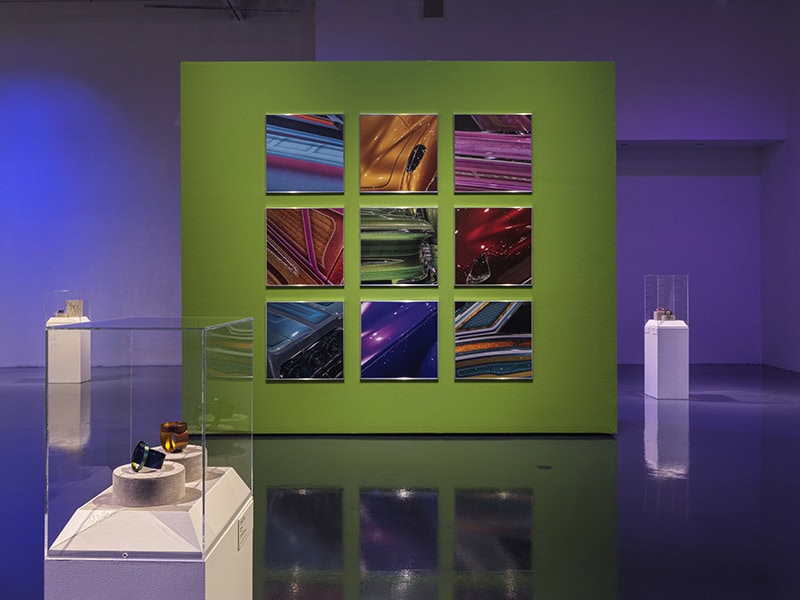
The source of all that color is paint. In motion. Pearl and metallic and Kandy auto lacquers. Their names begin with “Color Shift,” “HyperShift,” and “Chameleon.” They clothe and define Thiewes’s minimal structures with lustrous, shifting color. The nature and origins of this medium demonstrate one reason it’s impossible to consider the work in Paint without acknowledging “The Border” between Texas and Mexico. It’s a very specific place and culture. Thiewes has lived and worked there for her whole professional life. It’s a force in the evolution of her practice.
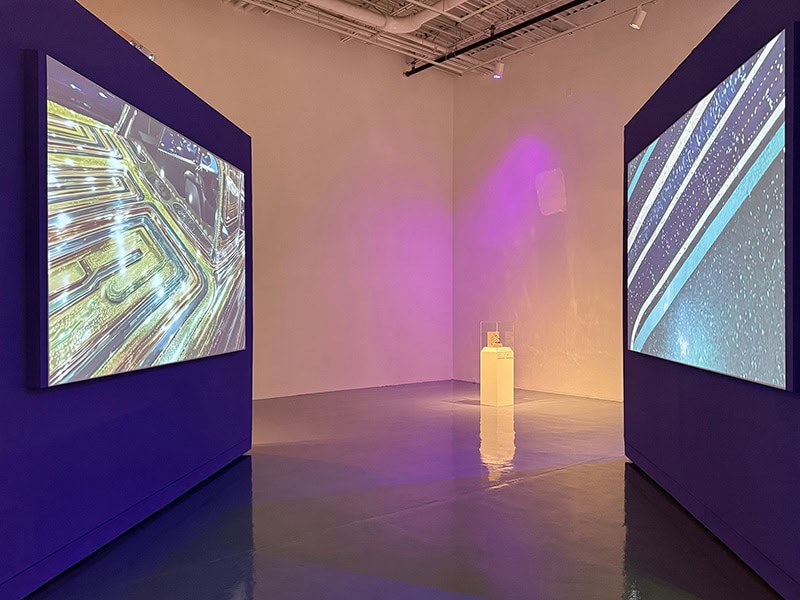
The show honors that border. El Paso sits on a culturally porous divide, next to the border town of Juarez, Mexico, and down the road from the Minimalist art mecca of Marfa, TX. Most clearly, the installation references the richness and range of Latino lowrider car paint palettes and imagery. Flowing images of lacquered auto bodies wash across facing wall-sized video screens in one section of the gallery. It’s a mesmerizing visual conversation. Samples and images of lacquers also have dedicated walls that demonstrate and describe this blending of these influences in her process. So do displays of Thiewes’s work in progress. She clearly both understands and honors this regional art form.
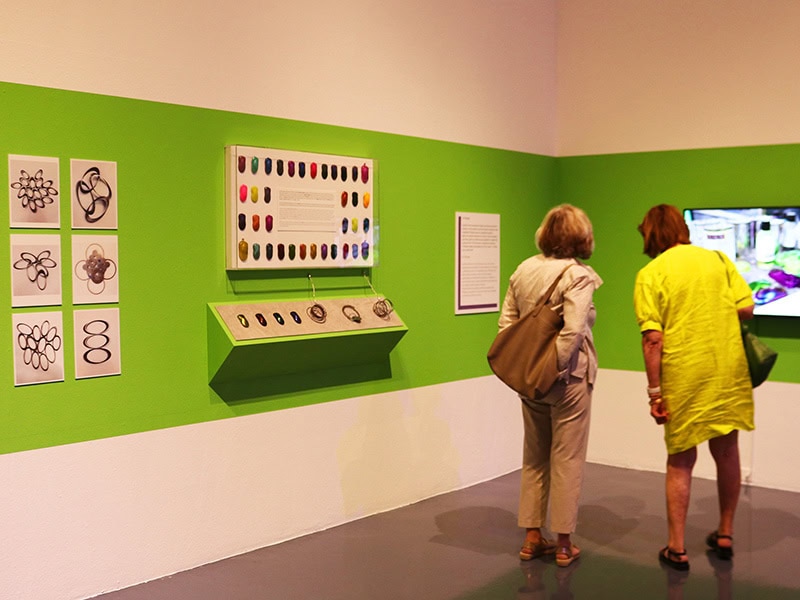
The austere, dramatic landscape around El Paso is a corollary to the simple objects Thiewes makes. Sun and wind shave the landscape to essentials of sky and horizon—sand and rock. Any disruptions of the vast planes of land and sky are a surprise, demanding attention. The brilliant blue sky and towering cloud formations are infinitely glorious. Thiewes’s work can be seen to reimagine that stark environment through sophisticated lenses of adornment and color.
She fabricates the jewelry pieces, mostly for neck and arm, from silver and steel. Lines and shapes pivot in skins of jewel-like auto lacquers. They form the core and focus of the show. Many products of her exhaustive research into form and color amplify the central work. Engaging experiments with bracelets and earrings are like wonderful little campfires of intense hues.
In addition to the video walls and paint/process visuals, two big walls show images of models wearing the neckpieces. They explore a kind of emotional interaction between the wearer and the worn piece, clarifying their scale and relationship to a body.
Throughout, each piece is isolated in soft, neutral casework. It suggests the luxury of jewelry display but is also nearly invisible. The deceptively simple jewelry pieces appear as absolutely effortless gestures. But each composition is actually a complex balance of material and color.
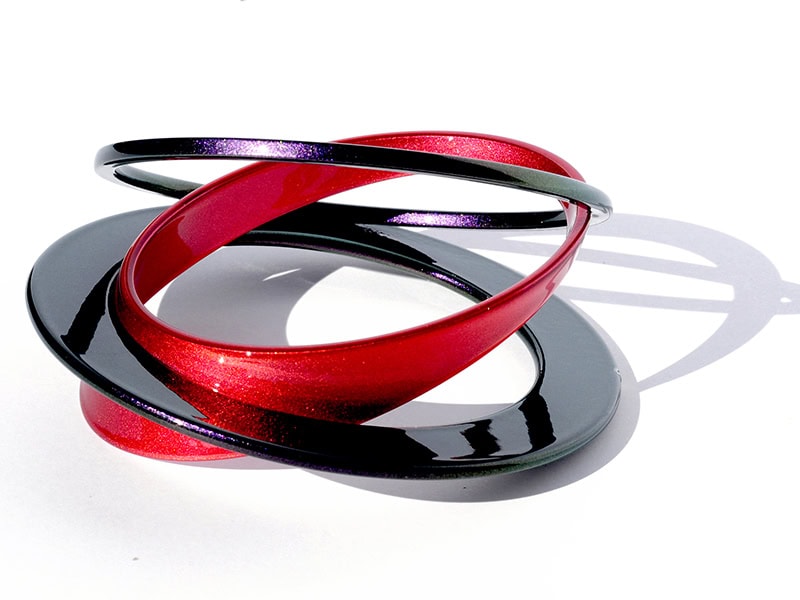
Looking a little closer, it’s a challenge to decipher positions and angles, where lines begin and end, or how connections are made. The auto lacquer colors change and flare when viewed from different angles. The painted surfaces gleam like individual jewels. The gray ground focuses the shimmering color, absorbs light, and reproduces concise profiles of each piece. Crisp shadows add a layer of graphic distortion to understand and decode.
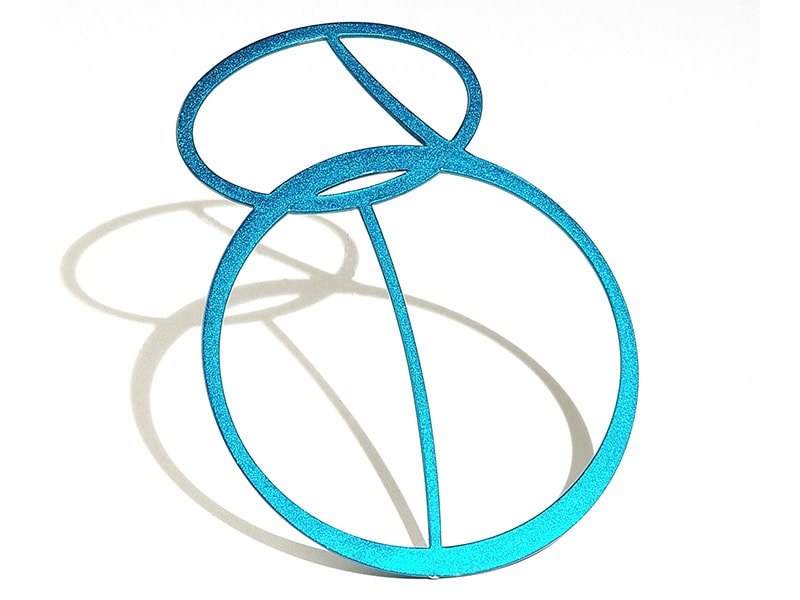
There’s an unexpected range of work in the show. You’ll see (almost flat) graphic icons and improbably dense three-dimensional constructions. Brooches, earrings, and neckpieces investigate what can happen between and beyond.
That said, the structure in each piece is both visual and functional. How can a bracelet like Slide, or another titled Reverb, possibly be worn? The structure slips and slides and may or may not have space to insert a wrist. But it does. Perfectly. Thiewes knows exactly how the piece can and should fit and interact with the body. The space around the wrist or arm or neck acts as a stage that her work animates—a performative extension of the body.
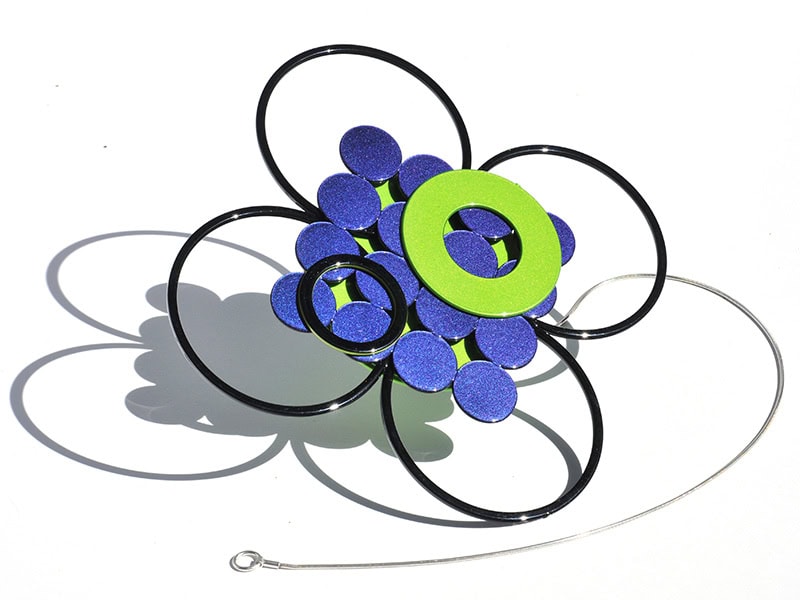
Interestingly, this work connects to early-20th-century Bauhaus theater productions. The Bauhaus stage was understood as an empty volume. A dancer was physically connected to and operating within stage-scale constructed lines and rings. Movement defined the changing structure. The dancer’s body activated the entire three-dimensional space, breaking it into shifting sculptural zones defined by the most minimal movements.
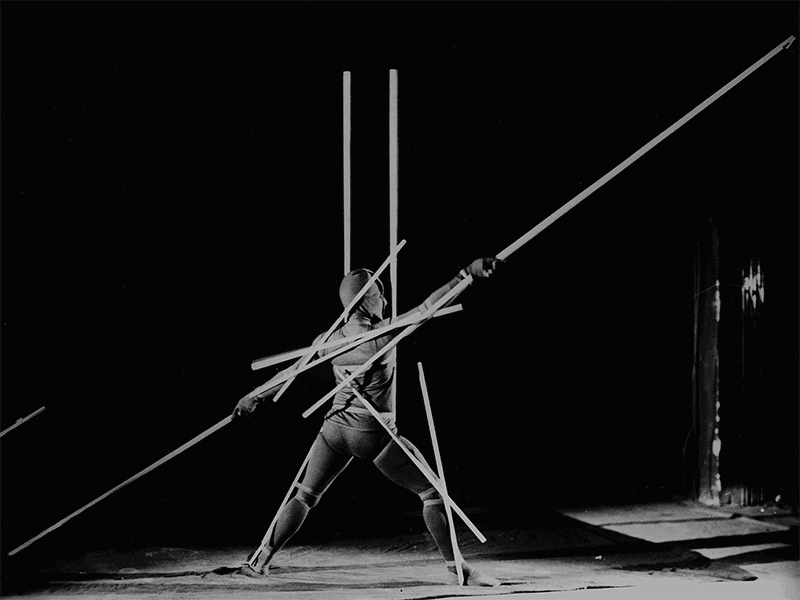
The Bauhaus performance required physical labor/movement and some visible engineering. In contrast, Thiewes’s works are calligraphic dances of materials, activating the space just beyond the borders of skin and bone.
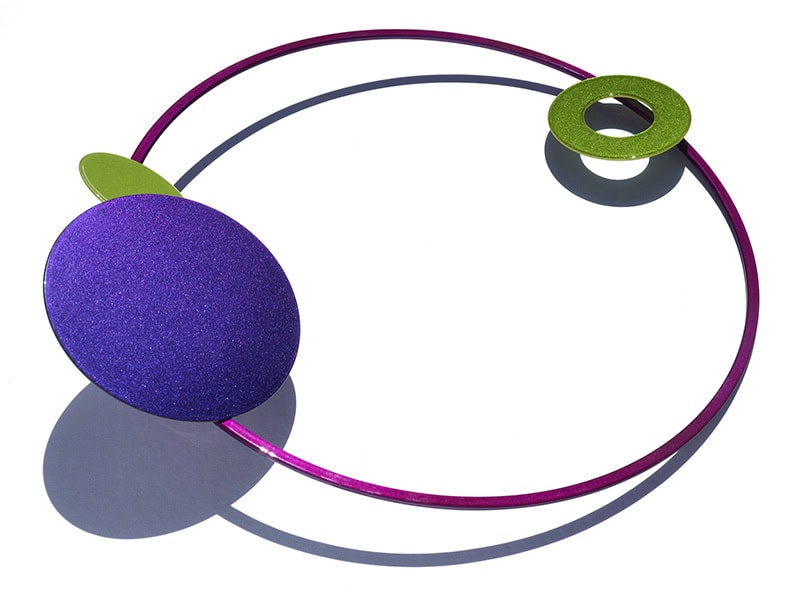
With some exceptions, a neck or arm piece exists first as a continuous form. No latches, catches, links, or findings. The neckpieces, in particular, subtly balance color and scale in a meticulously tested structure. They somehow hold their intended position on the body with no obvious support beyond basic laws of the physics Thiewes has worked out for each piece. Bright disks and ellipses lean and pop in a relationship of figure and ground. This ephemeral, asymmetrical balance may be the finest expression of her investigation.
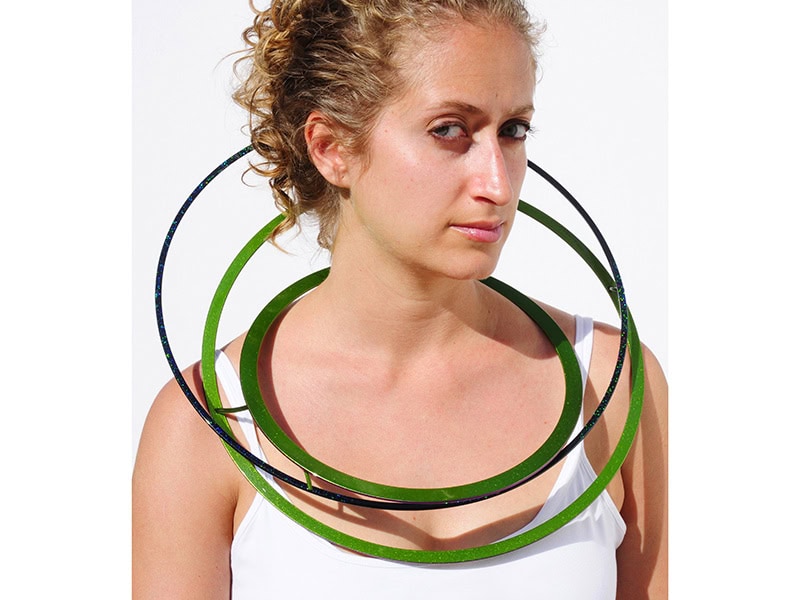
The neckpieces, poised on a neck or shoulder, are graceful structures. Faultlessly finished, they suspend line and form in space, like a good Calder mobile. Unlike a mobile, however, Thiewes’ structures are fixed, balancing on and responding to the motion of the wearer. They transform on the body, from an interesting, refined object to an unexplainable, weightless phenomenon. Their animation is almost magical. That’s in part because the “crafting” in Paint is virtually invisible. Echoing Arthur C. Clarke’s observation regarding technology, it appears that “Any sufficiently sophisticated crafting may well be indistinguishable from magic”—at least in this work.
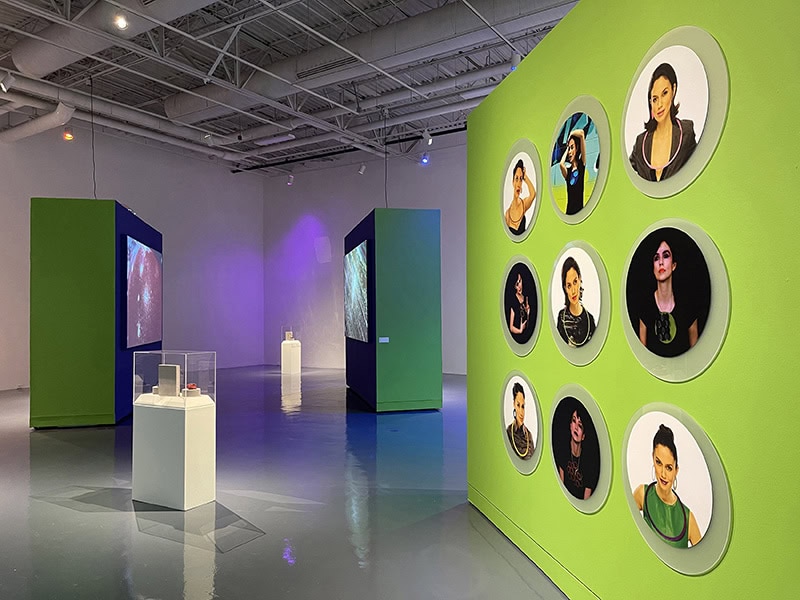
Paint is a rich, cohesive show, clearly more than the sum of its parts. It could have been an honorable retrospective record of Thiewes’ prolific practice. Instead, it dives deeply into recent work. It proves what makes it important to this time and place in a thoughtfully choreographed experience of understanding the objects, their origins, and their connection to the worlds of art and material culture. Taking it all in requires attention and discovery. The undeniable excitement and beauty of the experience makes the necessary mindfulness completely worthwhile.
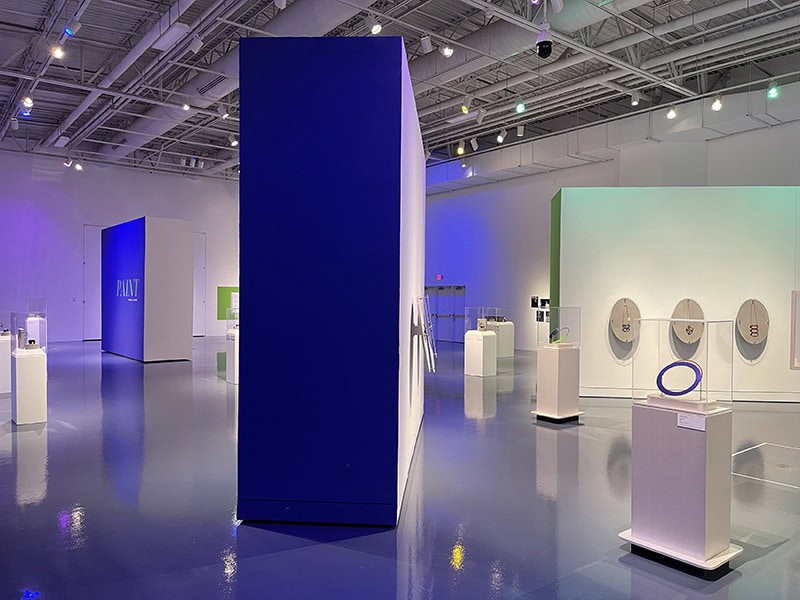
We welcome your comments on our publishing, and will publish letters that engage with our articles in a thoughtful and polite manner. Please submit letters to the editor electronically; do so here. The page on which we publish Letters to the Editor is here.
© 2025 Art Jewelry Forum. All rights reserved. Content may not be reproduced in whole or in part without permission. For reprint permission, contact info (at) artjewelryforum (dot) org
